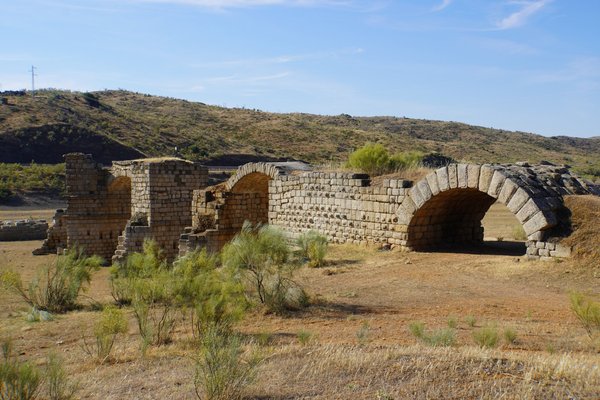Spain
The Silver Route
The Silver Route or Via de la Plata is a historic trade route and pilgrimage path that connected the present-day cities of Atorga and Merida. A second section continued to Seville.
The origin of the route dates back to pre-Roman times, the Romans converted the road into one of their main communication routes on the Iberian Peninsula. Visible remains, in addition to already inscribed WHS, are mainly ruins of bridges (Alconetar, Viejo de la Mocha, Aljucen), as well as the archaeological site of Cáparra.
Site Info
Official Information
- Full Name
- The Silver Route (ID: 1024)
- Country
- Spain
- Status
-
On tentative list 1998
Site history
History of The Silver Route
- 2010: Deferred
- .
- 2009: Referred
- .
- 1998: Added to Tentative List
- Added to tentative list
- Type
- Cultural
- Criteria
Links
- UNESCO
- whc.unesco.org
All Links
UNESCO.org
- whc.unesco.org — whc.unesco.org
Community Information
- Community Category
- Archaeological site: Ancient Rome
Travel Information
Recent Connections
News
No news.
Recent Visitors
Visitors of The Silver Route
- aleserre
- Alexander Lehmann
- Ammon Watkins
- Argo
- Caspar
- Christoph
- Christravelblog
- Clyde
- David Berlanda
- Els Slots
- Hubert
- Jakob F.
- Jasam
- Javier Coro
- Jonas Kremer
- Kurt Lauer
- M. Huineman
- michaelsballard
- MMM
- nan
- Persian Globetrotter
- Pink Bunny
- Porcho
- Randi Thomsen
- Roman Bruehwiler
- Szucs Tamas
- Tevity
- Thomas van der Walt
- Tim Allen
- tony0001
- Walter
Community Reviews
Show full reviews
After having cycle the Camino Frances ( Route of Santiago de Compostella - WHS) in Spain in 2012, I went cycling for another long trip along the Via de La Plata (The Silver Route) in september 2014.
The Via de la Plata is another way of Saint-James in Spain, getting from Sevilla to Santiago. It is far less travelled than the two main ways (the Camino Frances and the Camino del Norte – both WHS). It means fewer pilgrims and longer stretch of solitude. In a way, it makes it more valuable and enkoyable. It is as well organized as the other ways. Well marked, and with many pilgrim’s hostels (albergue) all along its way.
Most people would agree that it is best to hike the main Camino Frances for a first experience on the Saint James way. The Via de La Plata is much more rewarding, but is better enjoyed as a second experience.
There is some confusion about what is exactly is the Via de la Plata. On the TL description, it seems to consist of the old roman road from Ayamonte, through Merida and then north to Astorga. Some people would like to extend it to Gijon in the north or have it start in Sevilla. For more confusion, there is two parallel ways named Via de la Plata : the roman way and the Saint-James’s cultural pilgrim’s way. They often merge or criss-cross, but can diverge for long stretches of the itinary. In the Extremadra …
Keep reading 0 comments
